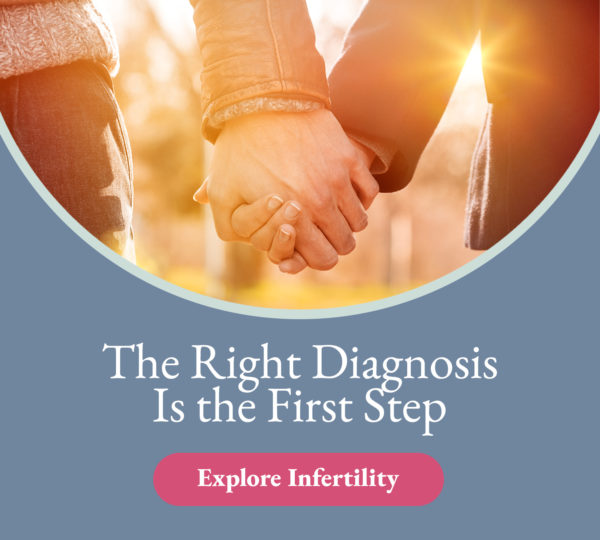Our team can treat the pain and infertility of endometriosis
Endometriosis is a condition in which normal endometrial tissue appears somewhere outside the uterus. The misplaced endometrial tissue is commonly within the pelvis (ovaries, uterine ligaments, fallopian tubes or rectovaginal septum). Less commonly, it appears in remote sites, such as lymph nodes, lungs, heart, skeletal muscle or bone. Commonly, endometriosis appears as an ovarian cyst. When it ruptures, it oozes a dark brown, hemorrhagic material. These cysts are “chocolate cysts.”
What are the symptoms of endometriosis?
Although in some individuals endometriosis may cause no symptoms, it can be associated with difficulty conceiving and pain. The pain may be present as extremely painful menstrual periods. This pain with periods, or dysmenorrhea, often becomes worse as a woman gets older. Pain with intercourse is not uncommon, and there may even be pain that persists throughout the month but is worse during periods.
Not everyone with endometriosis has pain. In fact, there is little correlation between the amount of endometriosis an individual has and the amount of pain she experiences. Sometimes a small implant may cause excruciating pain, while someone with severe disease may be pain-free.
How does endometriosis affect fertility?
The association of endometriosis with difficulty conceiving may occur in several ways. Endometrial implants are irritating to the body. As a result, the body produces a group of substances known as prostaglandins. Prostaglandins can alter not only the maturation and development of the egg within the ovary but also the release of the egg from the ovary.
Endometriosis can affect the ability of the fallopian tube to function normally. By mechanically obstructing the ability of the tube to capture the egg, this condition may contribute to the inability to conceive. Thus, even if ovulation does occur, the egg may not get into the fallopian tube.
It is not clear why endometriosis occurs in some individuals and not in others, but about 10-20% of all reproductive-age women have been found to have it.
Diagnosing and treating the problem
Most patients at Fertility Specialists of Texas undergo an ultrasound evaluation at their first visit. This allows our physicians to evaluate if endometriosis may be contributing to the inability to conceive. Factors associated with the development of this condition include delayed childbearing, long periods of uninterrupted menstrual cycles, abnormal pelvic anatomy and stress.
Many other factors have been associated with the development of endometriosis. There is even a genetic factor, meaning that you may inherit an increased likelihood of developing this condition if a close relative has it.
Endometriosis is not visible by ultrasound unless there is ovarian involvement. In that case, endometriomas are visible by ultrasound. If significant disease is present, the combination of a history, pelvic exam and ultrasound will reveal it.
The only way to definitively diagnose endometriosis is by visualizing it. With a laparoscopy, the physician is able to evaluate if it is present and any adhesion or scarring that may have formed. Surgical removal of ovarian endometriomas can be removed at that time if they are affecting your ability to conceive.
Contact us to learn more about this condition and how we treat it.

